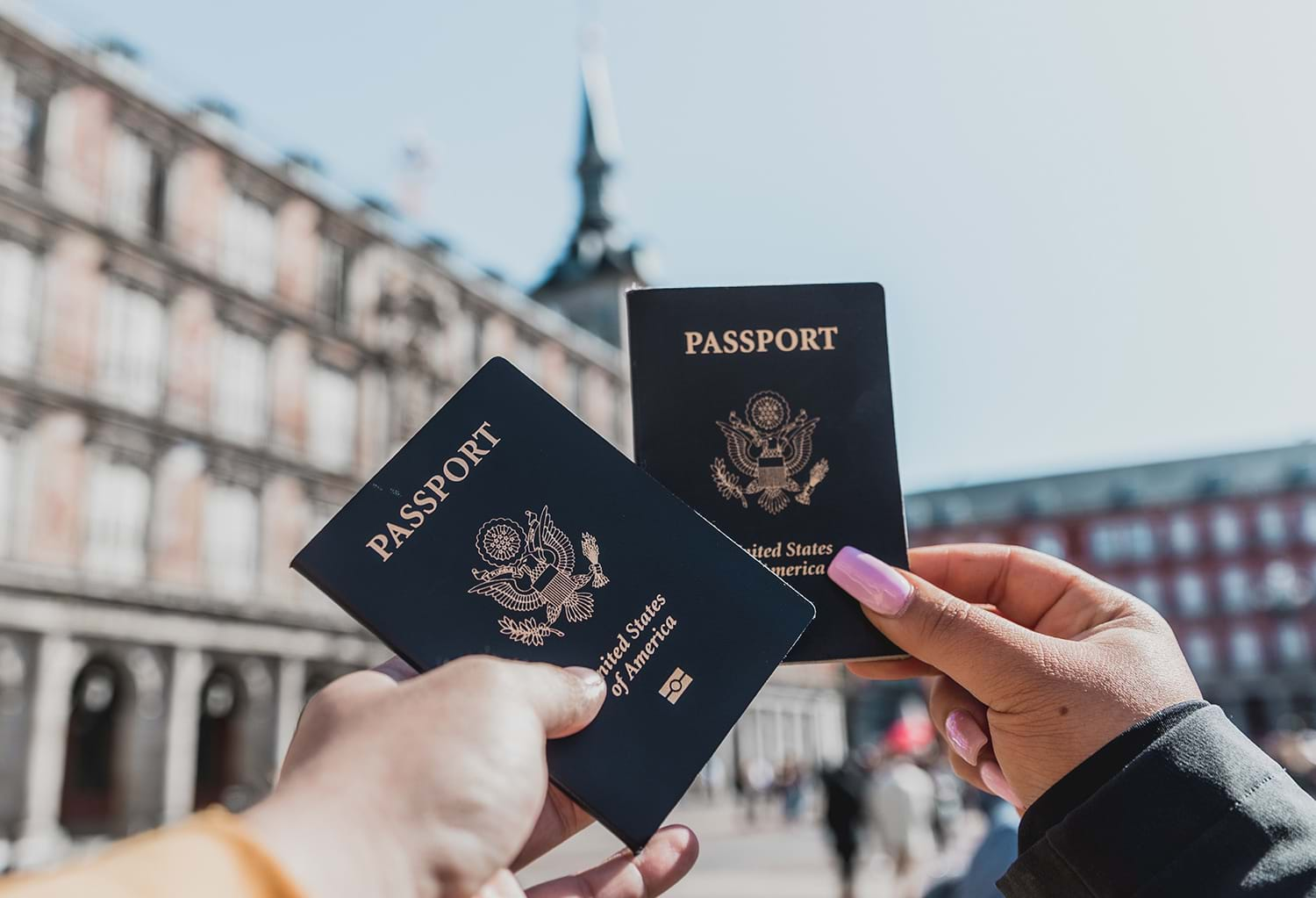 Photo by Pedro Lastra on Unsplash
Photo by Pedro Lastra on UnsplashIS IT SAFE TO TRAVEL TO EUROPE IN 2026?
In any normal year, the question of whether it’s safe to travel to Europe would focus on pickpockets and petty theft. Now, as the war in Ukraine grinds on, travel safety in Europe has become intertwined with larger issues.
Travel Safety In Europe: What You Need To Know
In general terms, traveling safely in Europe means what it does in other parts of the world, namely:
- Watch your belongings
- Be aware of your surroundings
- Be alcohol-smart
- Limit the time you spend walking streets alone after dark
- Check with your country's State Department for travel advisories before your trip
We’ve dealt with these considerations numerous times, including our post on Spring Break travel-safety tips.
However, there are several Europe-specific safety considerations you need to be aware of when planning a European vacation. These include:
- Communicating in multiple languages
- Navigating multiple currencies
- Having the right documents
- Understanding medical care
- Carrying travel insurance
 Photo by Christian Lue on Unsplash
Photo by Christian Lue on Unsplash
Dealing With Multiple Languages
Europe has more people speaking more different languages in a relatively compact area than any other part of the world.
Consider that Switzerland – tiny Switzerland! – has four official languages: German, French, Italian, and Romansh. Belgium has three official languages: Dutch, French, and German. Dialects can vary dramatically from the north of Italy to the south, or from the Spanish coast to the Basque country.
And in the countries that made up the former Yugoslavia – it’s almost impossible to know who’s speaking what.
Unless you’re only traveling to one country, or not venturing further east than the United Kingdom, you’re likely to run into signs in these languages or people speaking them. You’ll also probably be totally bewildered.
What do you do?
Here are a few tips.
1. Try English first. In most parts of Europe an English speaker is never that far away. Even if someone speaks only a few words of English, it should be enough for you to have a basic conversation – and in most cases, a basic conversation is all you need to have.
2. Try gestures second. If there are no English speakers around, and you have no clue about how to speak the local language, gestures go a long way toward getting your point across.
3. Try an app. The number of languages offered by Duolingo is downright ridiculous – you can even learn Klingon! If you’re taking a deep dive into a country where English speakers may be few and far between, learning a few words in the local language before you leave can be tremendously helpful.
4. Use Google Translate. This incredible point-and-translate tool is great for deciphering road signs, mass-transit instructions, and more. Don’t leave home without it – seriously.
 Photo by Who’s Denilo ? on Unsplash
Photo by Who’s Denilo ? on Unsplash
Dealing With Multipe Currencies
Not only do the different European countries have their own languages, but they have their own currencies as well.
The adoption of the Euro by 20 countries (including Spain, France, Italy, and Germany) has made currency issues a little less messy, and you can always just pack a credit card, but one of our top safety tips is to always carry some of the local currency, so you can pay a taxi driver in an emergency or grab food from a street vendor.
If you’re dashing across Scandinavia, that could mean your pockets will be full of Danish kroner in Sweden, and Swedish krona in Norway.
How do you keep enough local currency on hand for emergencies, yet not so much that you have a good portion of your travel budget tied up in money you’ll never spend?
Follow these tips.
1. Limit the amount of local currency you get to the equivalent of US $20-$50. This is a fluid number depending on how long you plan on staying in the country.
2. Force yourself to spend cash. A good strategy is to wait until you’re about ready to leave a country, and then pay cash for food.
3. Use a credit card most of the time. The days are past when using a credit card overseas meant getting hit with exorbitant exchange-rate differentials. Pack multiple brands of credit cards – a Visa plus an American Express card, for instance.
Having The Right Documents
Here we’re talking about a lower-case-v visa – the kind you need to get into some countries.
Much of Europe is in the Schengen zone, a passport-free zone that allows free travel between countries for residents of countries in the Schengen area.
Residents of many countries outside the Schengen area need a special document -- a Schengen visa -- to visit countries inside the area.
Fortunately, U.S. residents don’t need a Schengen visa, though they do need the following when they enter the Schengen area:
- A valid U.S. passport
- Evidence on their purpose of entry
- Proof of sufficient financial means
In addition, starting in 2026 the European Union will (finally) require Americans to apply for authorization to visit member states. The application will be quick (less than 10 minutes) and inexpensive ($8 or thereabouts), but it will be one more thing Americans need to do before visiting Europe.
 Photo by Kai Pilger on Unsplash
Photo by Kai Pilger on Unsplash
Staying Safe In Europe: What's Being Done
Even in a post-pandemic environment, American travelers to Europe will likely find some significant, fundamental health-and-safety-related changes in the European travel experience.
They may include:
Greater crowd control
Overtourism was a problem pre-pandemic; in the interregnum, cities like Venice have re-examined what they want the tourism experience to be like and are planning greater restrictions on tourist access to many popular areas.
For instance, in 2024 Venice started issuing a $5 daily entry fee for peak travel days.
This may drive up prices, but more importantly, it will force travelers to be more diligent about securing their spot in line at many popular attractions.
Fewer cars
The pause in tourism also led many cities to accelerate the de-car-ification of their central cities. In Paris, for instance, main streets like the Rue de Rivoli have been blocked to cars and opened to bikes and pedestrians.
This could also result in increased demand for mass transit and rentals of bikes, e-bikes, and scooters – and different things for pedestrians to watch out for. (And if you’ve ever been to Amsterdam, you know watching out for bikes is not a casual thing.)
However you look at it, getting around Europe’s biggest cities will never be the same.
 Photo by Jason Row on Unsplash
Photo by Jason Row on Unsplash
More thorough checks of people entering countries
Essentially all the regulations imposed by European countries during the pandemic have been eliminated. Entry into European countries is much like it was pre-COVID … until the next wave of infection hits.
Travel to Europe has been fundamentally changed. The good news is that it might be changed for the better. The new style of European travel will likely be much safer, cleaner, greener, and sustainable – and that’s good news for all travelers, well into the future.
Why You Need Travel Insurance For European Travel
Visiting Europe is one of the easiest overseas trips an American traveler can make. So why is travel insurance so important?
For these reasons, and more:
- European travel isn’t cheap.
- European travel often involved a lot of prepaid, non-refundable expenses – which travel insurance was created to cover.
- Your health insurance probably won’t cover European healthcare expenses.
- Trip cancellations and interruptions, lost luggage, travel delays, and medical emergencies can occur just as easily in Europe as anywhere else.
Given all that, getting a quote for travel insurance from Berkshire Hathaway Travel Protection just seems prudent. BHTP’s industry-leading array of plans can cover practically any sort of European travel, from a river cruise to a ski vacation.
With travel insurance in your pocket, European travel-safety challenges seem less daunting. And that’s something every traveler can appreciate.
Questions About Travel Insurance?
Check out our online guide, "What Is Travel Insurance All About?" We've provided in-depth answers to all your travel insurance questions, starting with the basics.
 Photo by Spencer Davis on Unsplash
Photo by Spencer Davis on Unsplash